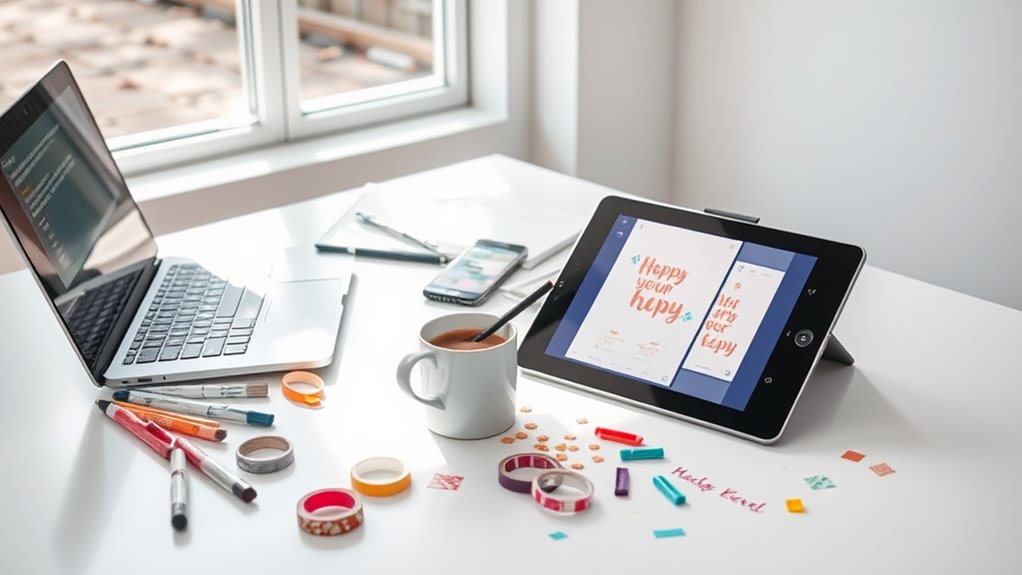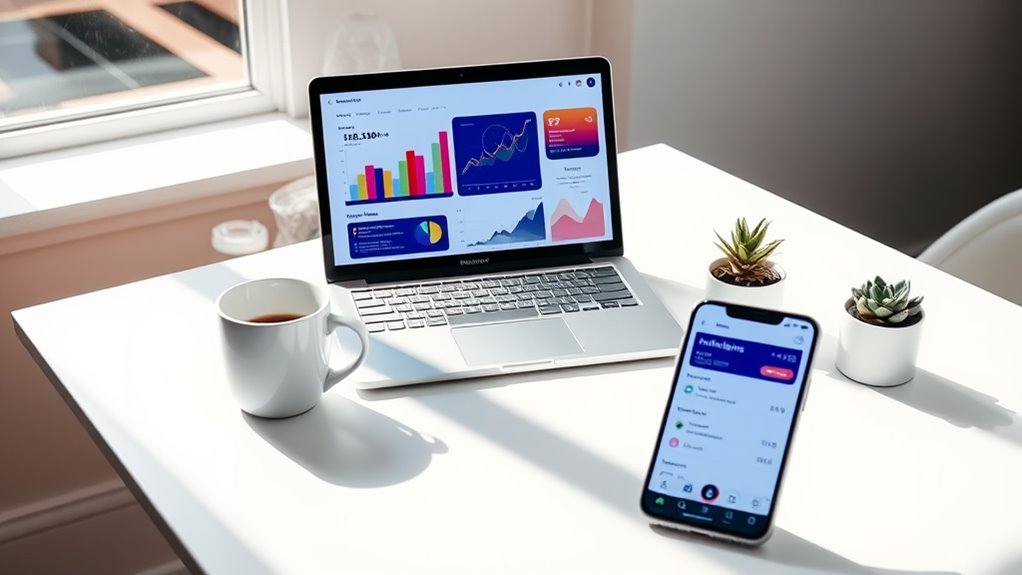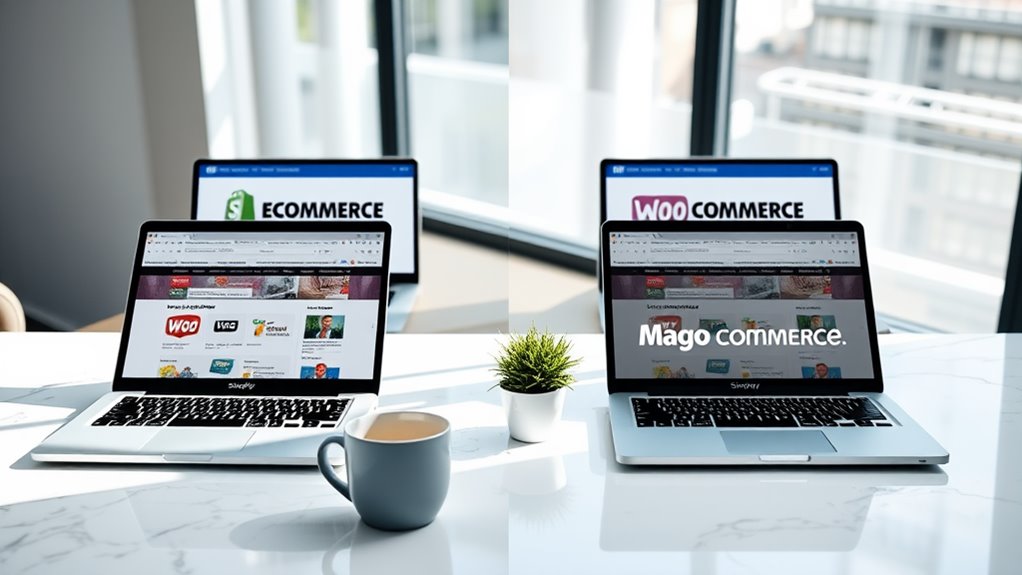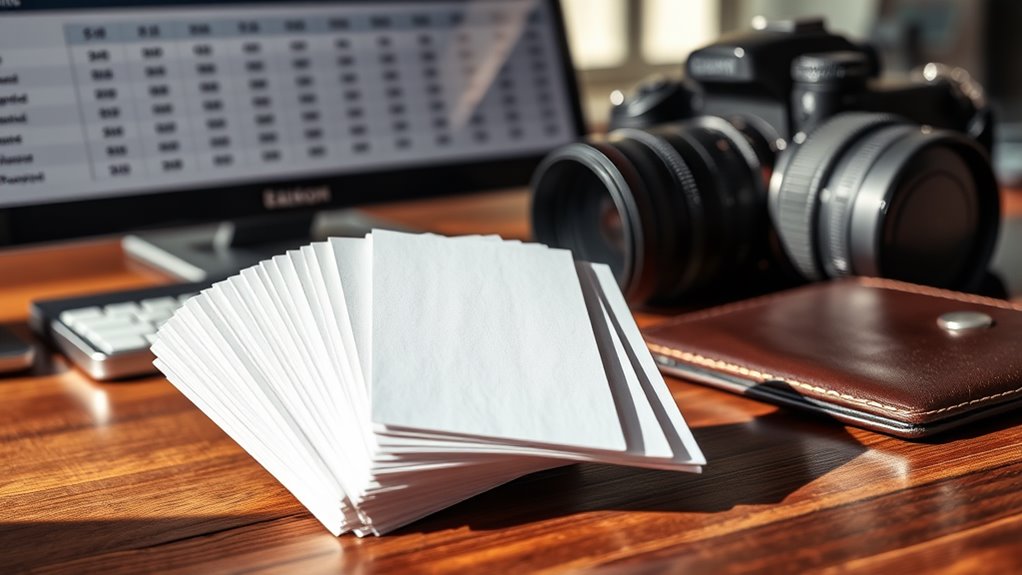You can create a digital card at home using free platforms like Canva or Adobe Creative Cloud Express, which offer user-friendly interfaces and pre-made templates. Start by selecting your preferred software, choosing a template that matches your occasion, and customizing it with your text, images, and color scheme. You'll need a computer with at least 4GB RAM, updated graphics drivers, and a reliable internet connection of 10+ Mbps. Export your finished card in common formats like JPG or PDF for easy sharing via email or social media. The following sections will guide you through each step of the creative process.
Key Takeaway
- Choose a user-friendly design platform like Canva for beginners or Adobe Creative Cloud Express for more advanced features.
- Set up your card layout with standard dimensions (5×7 inches) and establish clear areas for text and images.
- Select 2-3 complementary fonts, maintaining consistency with 18-24pt for headlines and 12-14pt for body text.
- Add visual elements using templates, digital assets, or custom graphics while maintaining 40% white space for balance.
- Export your finished card in multiple formats (PDF, JPG, PNG) and test display across different devices before sharing.
Essential Tools and Software
Creating digital cards from scratch requires a few basic tools to get started. You'll need both hardware and software components to guarantee professional-looking results.
Essential Hardware:
- Computer or tablet with a reliable display
- Mouse or stylus for precise control
- Optional: graphics tablet for hand-drawn elements
Required Software:
- Image editing program (Adobe Photoshop, Canva, or GIMP)
- Vector graphics software for scalable designs
- Font management system for typography options
Online Resources:
- Digital asset libraries for stock images
- Color palette generators
- Template repositories
Before you begin designing, you'll want to install at least one thorough design program that matches your skill level. While Canva offers an intuitive interface for beginners, Adobe Creative Suite provides advanced capabilities for experienced designers. You'll also benefit from cloud storage (minimum 5GB) to safely backup your projects and assets.
Technical Requirements:
- Minimum 4GB RAM for smooth operation
- Updated graphics drivers
- High-speed internet connection (10+ Mbps)
- Screen resolution of 1920×1080 or higher
Remember to organize your tools in dedicated folders, and keep your software updated for peak performance.
Choosing Your Design Platform
With your tools ready, selecting the right design platform will shape your entire card-making experience. You'll find several options that cater to different skill levels and creative needs.
Popular Design Platforms:
- Canva – Best for beginners, offering 250,000+ templates and an intuitive interface
- Adobe Creative Cloud Express – Professional-grade features with 20,000+ templates
- PicMonkey – Specialized in photo editing with card-specific tools
- Visme – Ideal for both static and animated digital cards
Platform Selection Criteria:
- User Interface: Choose a platform that matches your technical comfort level
- Template Availability: Confirm the platform offers designs aligned with your vision
- Export Options: Verify supported file formats (PNG, JPG, PDF, or GIF)
- Cost Structure: Compare free versus premium features
Advanced Considerations:
- Integration capabilities with email marketing tools
- Mobile app availability for on-the-go editing
- Cloud storage options for project management
- Collaboration features if working with others
Select a platform that balances your creative needs with technical requirements, and don't hesitate to test multiple options through free trials before committing to one.
Creating Your Card Layout
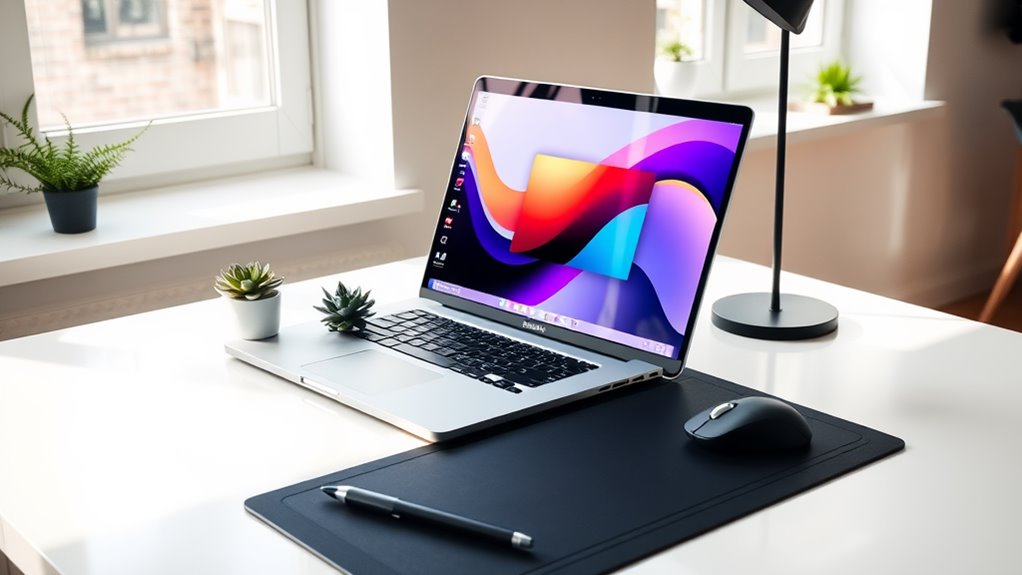
Once you've chosen your platform, establishing a strong card layout forms the foundation of your design. Start by selecting your card's orientation (landscape or portrait) and determining the standard dimensions, typically 5×7 inches for greeting cards or 1920×1080 pixels for digital displays.
Essential Layout Elements:
- Set your margins at 0.25 inches from each edge
- Create a safe zone of 0.5 inches for vital content
- Establish a clear visual hierarchy with focal points
- Divide your space into thirds using the grid system
When arranging your elements, you'll want to:
- Position your main message or image at the optical center, slightly above true center
- Leave 40% white space for visual breathing room
- Align text and graphics to maintain consistency
- Consider fold lines if you're creating a printable version
Your layout should incorporate designated areas for:
- Header text (20-25% of space)
- Main imagery (30-40% of space)
- Body content (25-30% of space)
- Supporting elements like logos or signatures (10-15% of space)
Remember to test your layout across different devices to guarantee proper scaling and readability.
Adding Text and Typography
Text and typography serve as essential elements that can make or break your digital card design. When selecting fonts and arranging text, you'll need to take into account readability, visual hierarchy, and emotional impact.
Key Typography Guidelines:
- Choose 2-3 complementary fonts: one for headlines, one for body text, and optionally one for accents
- Maintain consistent font sizes: 18-24pt for headlines, 12-14pt for body text
- Keep line spacing at 1.15-1.5 times the font size for best readability
When adding text to your digital card:
- Start with a clear headline that captures attention
- Break content into digestible sections using subheadings
- Use bullet points or numbered lists for important information
- Think about text alignment: center for formal cards, left for casual ones
Typography Tools and Tips:
- Utilize font pairing tools like FontJoy or Google Fonts
- Test readability at different screen sizes
- Apply color contrast ratios of at least 4.5:1 for accessibility
- Save your preferred font combinations as templates for future projects
Remember to proofread thoroughly and verify your text maintains proper spacing across different devices and platforms.
Working With Images
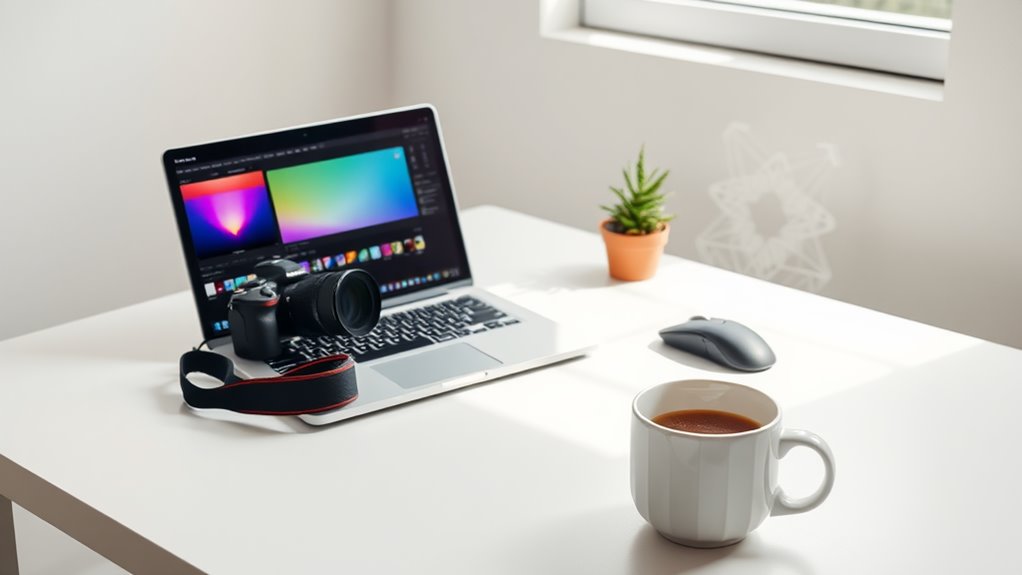
Images play an essential role in creating eye-catching digital cards. When working with images for your digital card design, you'll need to understand several key aspects of image manipulation and placement.
Key Image Considerations:
- Resolution: Use high-quality images with at least 300 DPI for sharp, professional results
- File formats: Select PNG for transparency or JPEG for photographs
- Size optimization: Keep file sizes under 2MB to guarantee quick loading
- Aspect ratio: Maintain proper proportions to avoid distortion
Image Manipulation Tips:
- Crop strategically to focus on the most impactful elements
- Adjust brightness, contrast, and saturation for cohesive appearance
- Apply filters consistently across all images used
- Layer images thoughtfully, maintaining 20-30% empty space
For best results, you'll want to create a focal point using your primary image, then complement it with secondary visual elements. Consider using image masks or frames to integrate photos seamlessly with your background. When selecting stock photos, confirm they match your card's theme and color palette. You can also create custom graphics using vector-based tools, which will maintain quality regardless of scaling.
Digital Card Distribution Methods
Several convenient methods exist for sharing your digital cards with recipients. Today's digital sharing landscape offers multiple distribution channels that you'll want to take into account based on your recipient's preferences and technical comfort level.
Primary Distribution Methods:
- Email attachment (.jpg, .pdf, or animated .gif formats)
- Social media platforms (Facebook, Instagram, LinkedIn)
- Direct messaging apps (WhatsApp, Messenger)
- Cloud storage links (Google Drive, Dropbox)
- Digital card platforms (Paperless Post, Canva)
Advanced Sharing Options:
- QR codes that link to your digital card
- Scheduled delivery through automation tools
- Embedded cards in websites or blogs
- Private gallery links with password protection
When selecting your distribution method, you'll need to take into account three key factors: file size limitations, recipient accessibility, and tracking capabilities. Most email services accept attachments up to 25MB, while messaging apps typically limit files to 16MB. For larger files, you'll want to use cloud storage options or dedicated card platforms that offer analytics and delivery confirmation. Remember to test your chosen method before sending to guarantee proper display across different devices and operating systems.
Digital Card Storage Tips
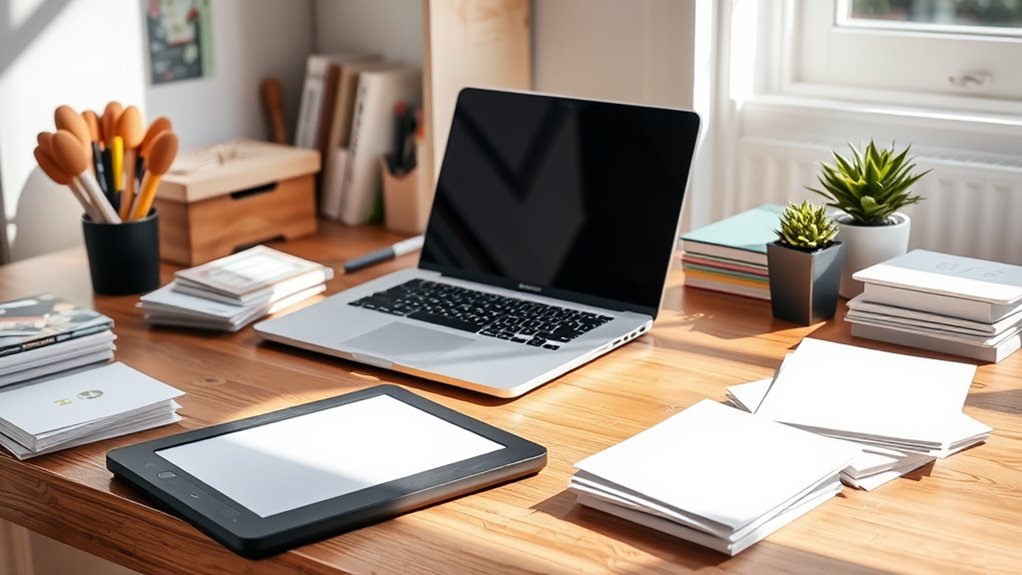
Once you've shared your digital cards, proper storage guarantees you'll have easy access to them for future reference or reuse. Let's explore the most effective methods for organizing and protecting your digital creations.
Essential Storage Practices:
- Create a dedicated folder structure with clear naming conventions (e.g., "Holiday_Cards_2023," "Birthday_Cards_2023")
- Use cloud storage services like Google Drive or Dropbox for automatic backup
- Export cards in multiple formats (PDF, JPG, PNG) for maximum compatibility
- Add descriptive tags to make searching easier
Backup Strategies:
- Maintain at least three copies of important cards
- Store one copy locally on your computer
- Keep another copy on an external hard drive
- Save a third copy in cloud storage
File Organization Tips:
- Sort cards by occasion, recipient, or date
- Include version numbers for different iterations (e.g., "Anniversary_Card_v1.2")
- Create a spreadsheet to track card details and recipient information
- Store associated assets (fonts, graphics) in adjacent subfolders
Remember to regularly update your storage systems and check for file integrity every six months to ascertain your digital cards remain accessible and organized.
Conclusion
Did you know that over 300 million digital cards were sent in 2022 alone, marking a 67% increase from previous years? You'll find that creating digital cards at home isn't just eco-friendly – it's also becoming the new standard for personal and professional communication. By utilizing the tools and techniques discussed, you're now equipped to design, customize, and distribute your own digital cards efficiently and cost-effectively.

